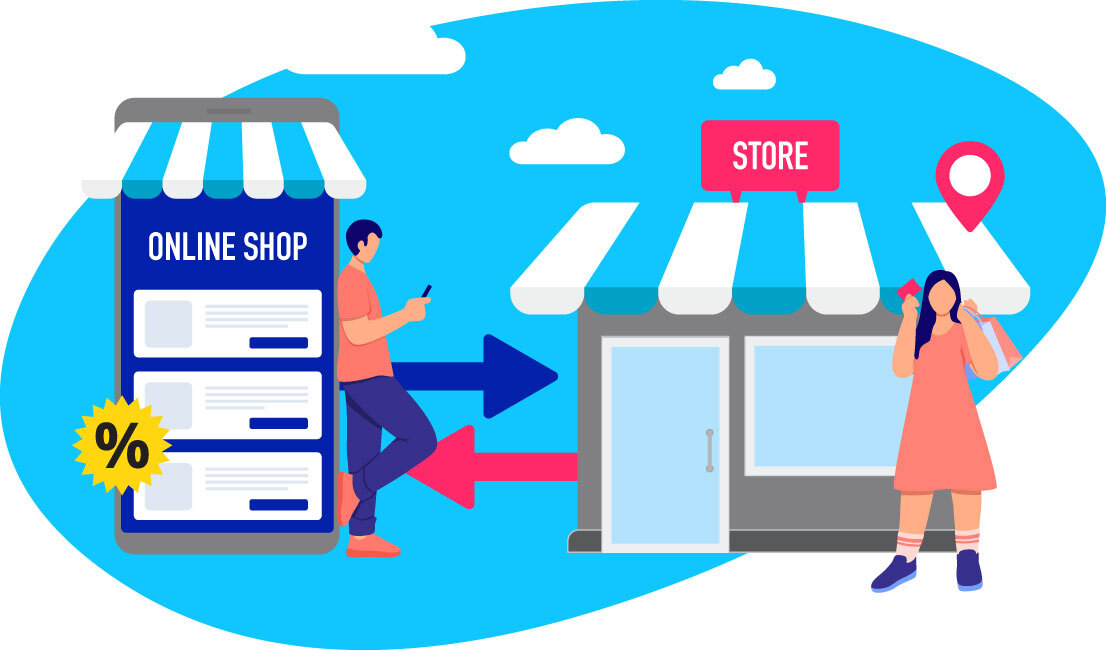5 min read
To succeed in the increasingly competitive world of mobile apps, finding ways to stand out and stay ahead of the competition is essential. Deep linking is a simple, effective way to optimize your effort. However, not all brands are taking advantage of it.
So, what is deep linking? What are the different types of deep links you can implement, and how can brands benefit from it? Read on to learn more.
What Is Deep Linking?
Deep linking is a tactic marketers can use to send mobile users directly to a specific page, such as a promotion or product page, within an app. A deep link is different from a standard link, which typically directs users to a browser version or the app homepage.
Deep links can be added to a wide range of channels, including web pages, emails, SMS, ads, and social media sites. For example, a retailer can create a social post for a product that directs shoppers to that specific product page in the app. Deep links can also be added to push notifications to send users directly to a new app feature.
This technology works by using URI (Uniform Resource Identifier) schemes. URI schemes are similar to a standard URL (Uniform Resource Locator) and are simply addresses, names, or references to a page formatted in a specific way.
What Are Different Types of Deep Links and How Do They Work?
There are three main types of deep links marketers can use.
- Basic deep linking
Also known as standard or universal deep linking, basic deep linking takes a user directly to a specific page within an app, as described above. For example, a travel brand could add a basic deep link to a promotional email that directs consumers to a flight sale page.
However, basic deep linking only works if the customer already has the app installed. Otherwise, the customer will simply see an error message or be redirected elsewhere, such as the app download page or app store. - Deferred deep linking
Deferred deep linking works in much the same way as basic deep linking – except it navigates a detour for people who don’t already have the app installed.
Instead of directing people to the download location of their device, such as the App Store or Play Store, and back to the app home or onboarding page, once the user downloads the app, they will be taken to the original page they were navigating. This ensures they don’t have to go through the process again manually. - Contextual deep linking
Contextual deep linking, also known as onboarding, works in much the same way as basic and deferred deep links, except it offers even greater functionality.
In addition to directing users to a particular page in the app, contextual deep links also allow marketers to gather and store information on customers. This includes data on where they want to go, which link they clicked, who referred them, or which promo code they used – data that can be used to personalize the app experience and customize the referral page.
How Can Brands Benefit From Deep Linking?
1. Streamline the user experience
By minimizing the need for manual navigation once a link has been clicked and getting people where they want to go faster, deep links make the customer journey more seamless. This optimizes the overall app user experience and enhances customer satisfaction.
2. Increase retention and engagement
Because deep links make the customer journey more streamlined, fewer users will churn, and more will stay and engage with your brand – another significant benefit. Deep links also navigate people back to your app when they are active on search, social, or other platforms, driving further engagement.
Studies have shown that deep links can double app user engagement over the course of one, seven, and 30 days.
3. Boost app discovery and acquisition
Deep linking can help you boost app discovery and acquisition. Firstly, deferred deep linking allows you to direct people to your app. Secondly, deep linking can be optimized with keywords, increasing your opportunities to rank in Google and drive people to your app.
Deep links can also be used to push users to your app reviews or the best features of your app to entice them to download.
4. Drive conversions
Because deep linking makes the customer journey shorter and easier, and boosts retention and engagement, it takes customers closer to the end goal: conversion. In fact, deep links are reported to increase conversions by an average of 66 percent . This means deep linking is a simple way to drive revenue and boost profits.
5. Get customer and campaign insights
By collecting data using contextual deep linking, you can gain valuable customer insights to refine your buyer personas, and personalize and improve your marketing.
Deep linking can also help you improve your campaigns by providing you with valuable data, such as what campaign links are being clicked.
Deep linking is a simple yet effective way to improve user experience, smooth the customer journey, and boost acquisition, engagement, and conversions. It can even provide you with valuable insights to make better, more profitable marketing decisions.
* Do you want to boost your app marketing efforts? Get in touch with our team today for an exclusive consultation! In the meantime, check out our white paper to learn how you can leverage martech to achieve a true omnichannel experience.



